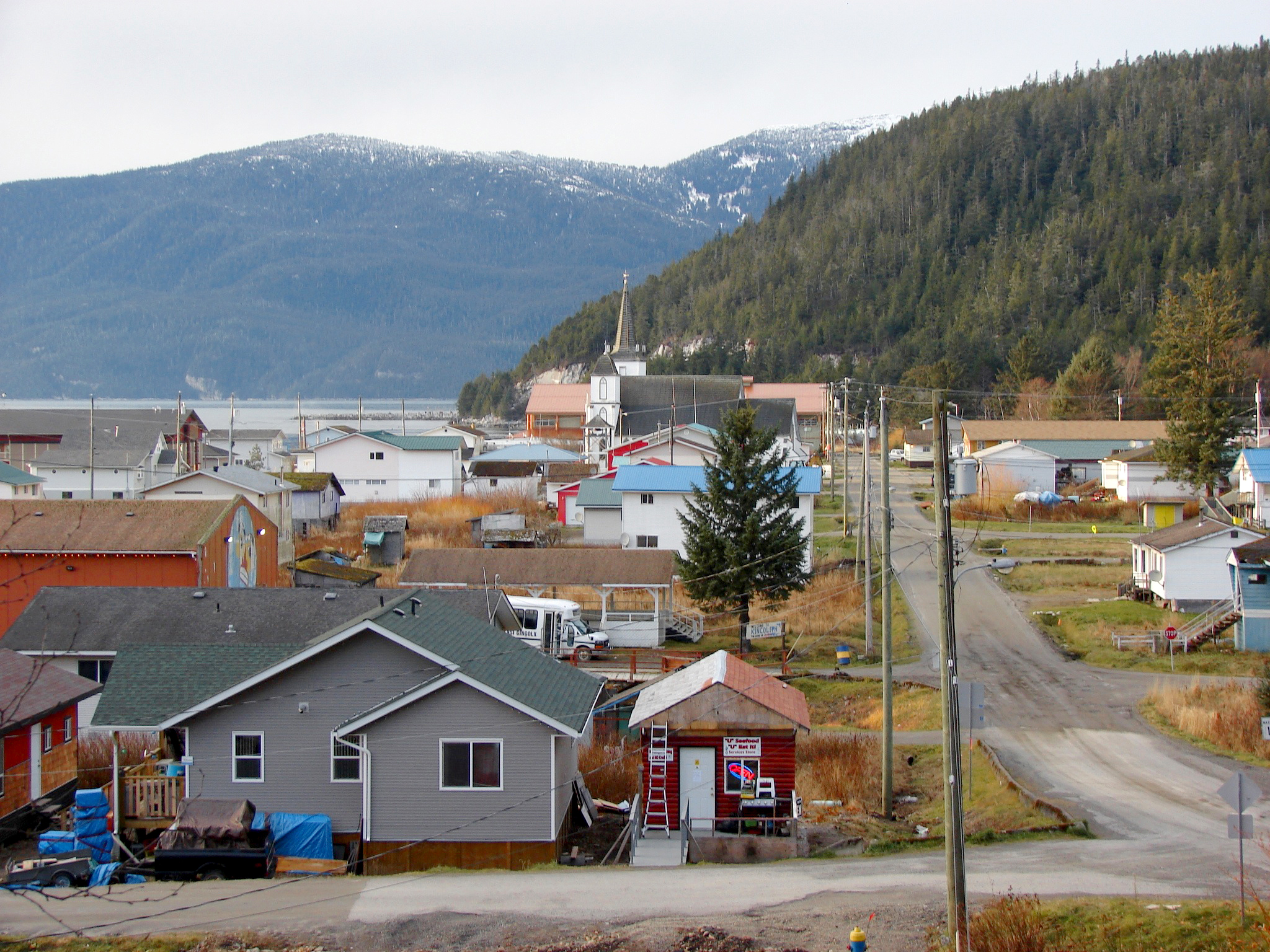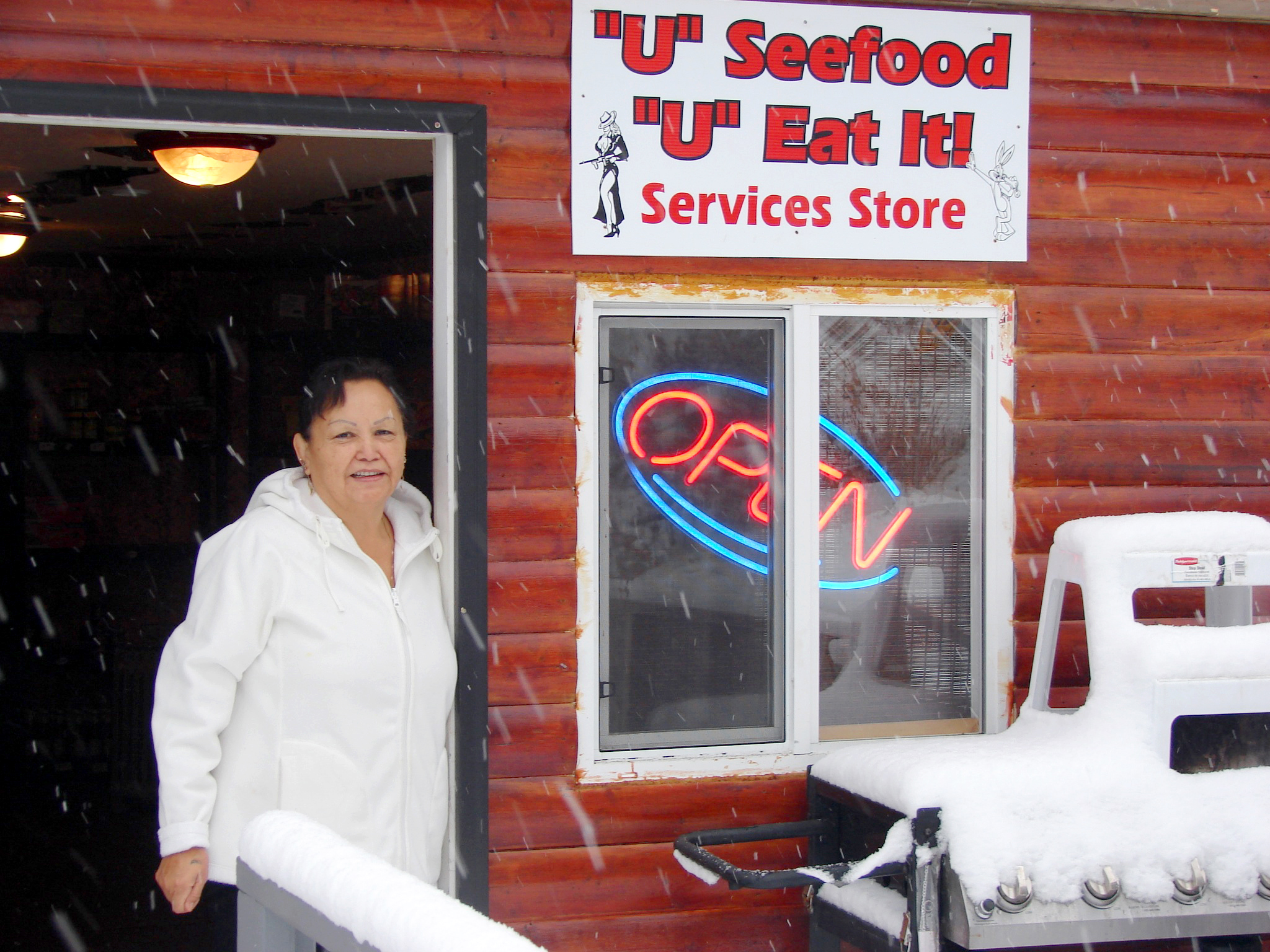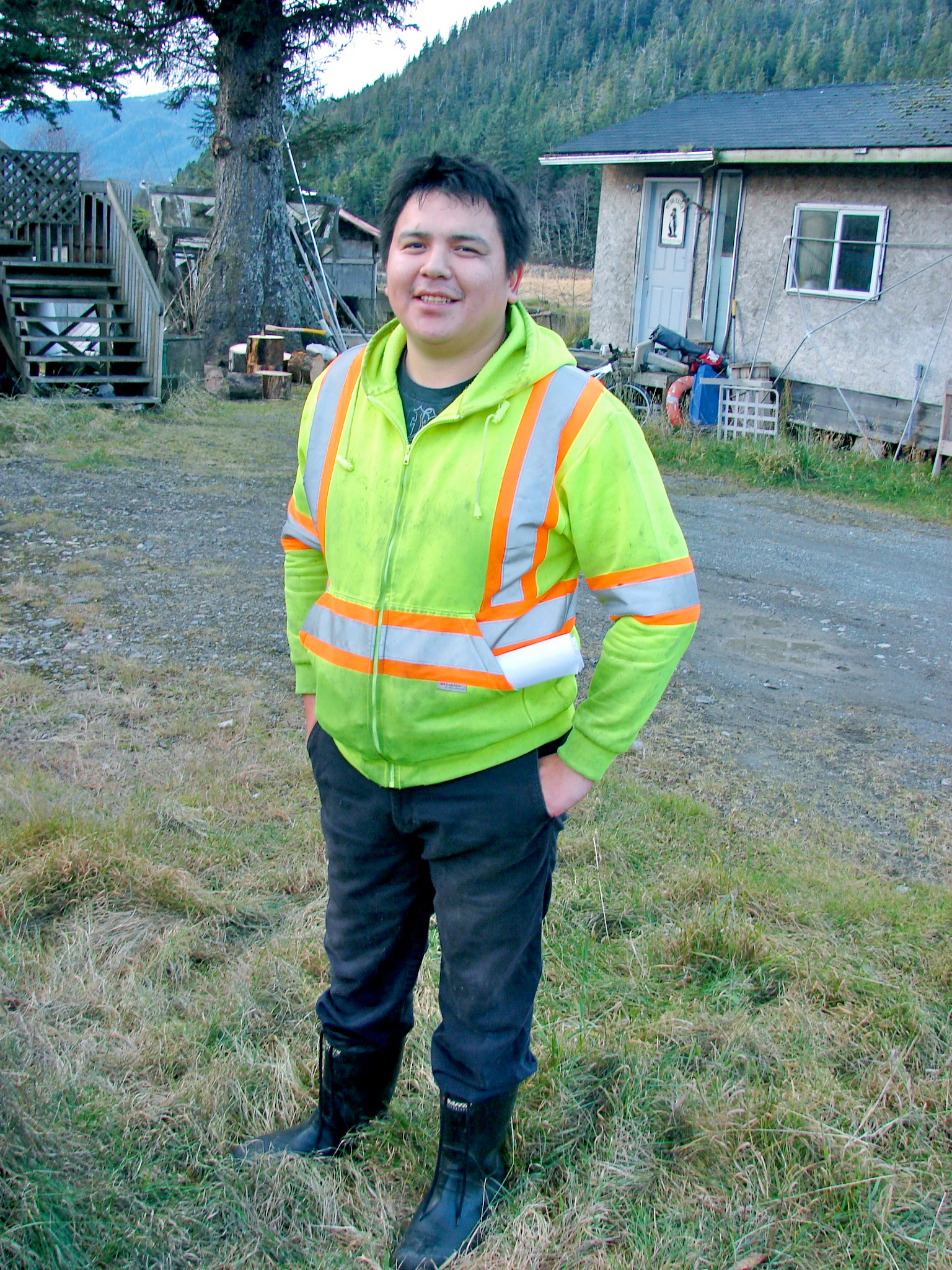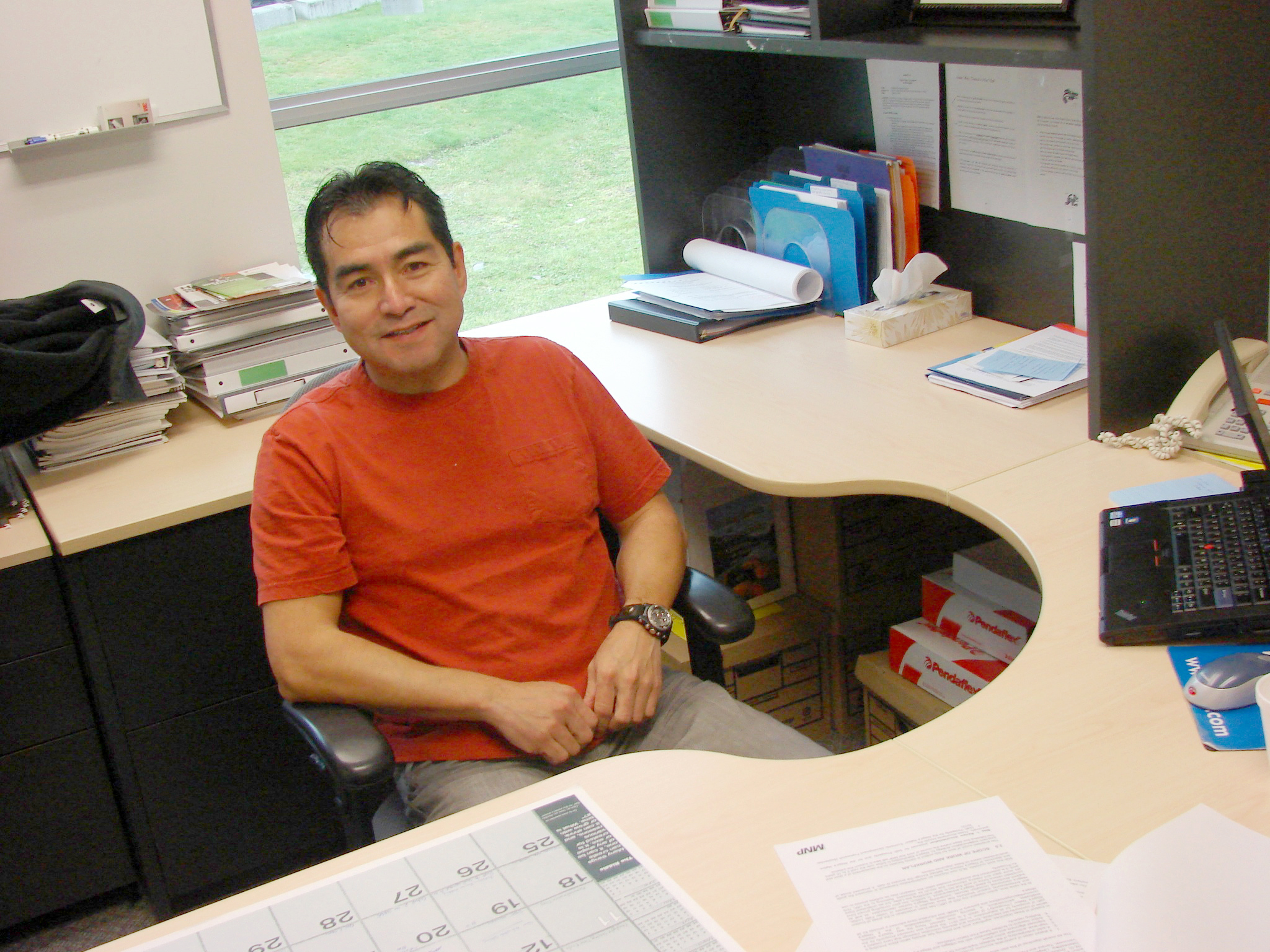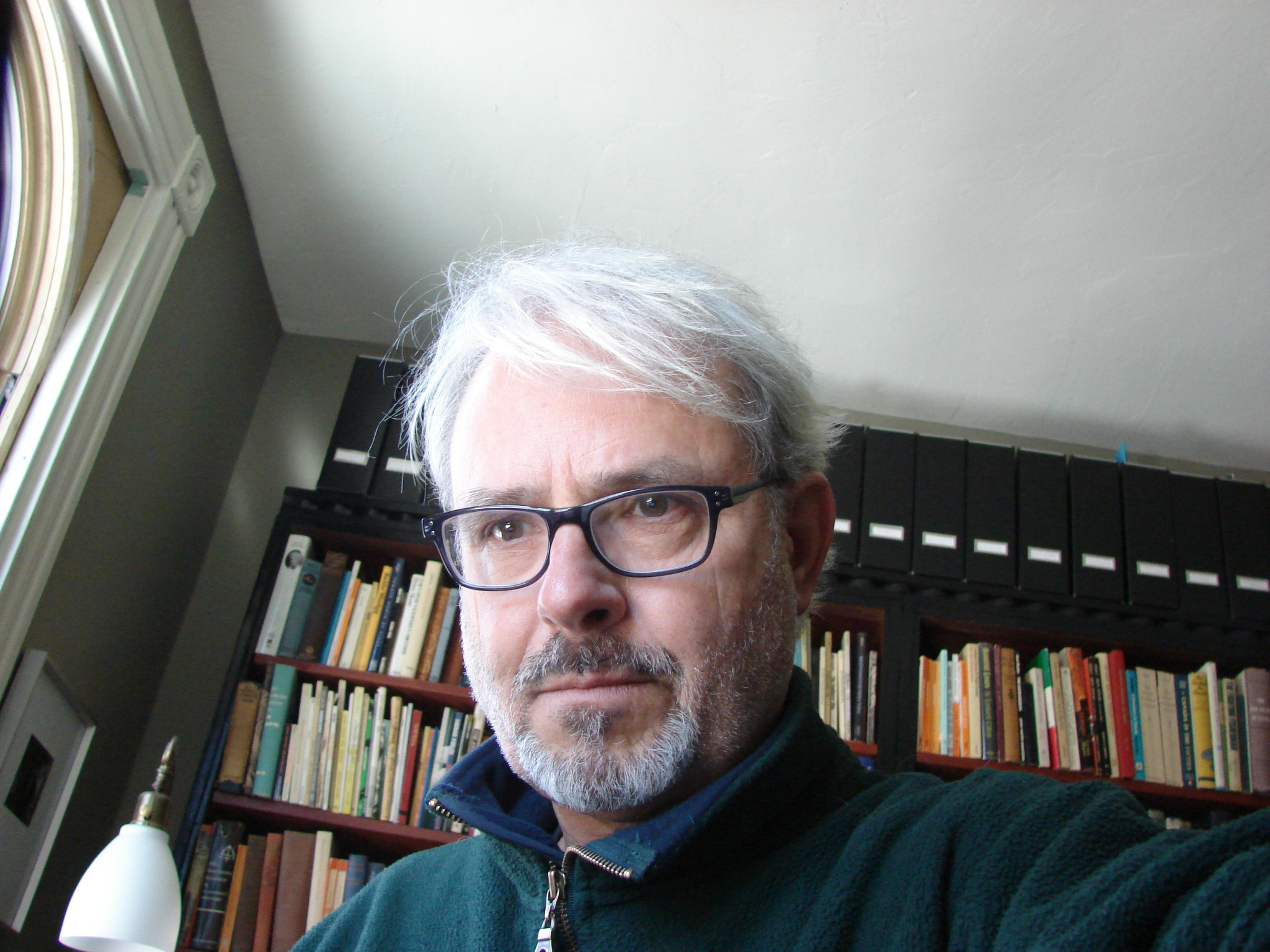Bonnie Stanley, a member of the Nisga’a First Nation in northern British Columbia, is a certified hairdresser. She also runs a catering business, a convenience store and a successful takeout food service from the front porch of that store. Stanley boasts that her halibut fish and chips are known literally around the world, thanks to the trickle of tourists who make their way to her shop. She calls her burgeoning food empire “U” Seefood, “U” Eat It.
Last year, Stanley decided to add to her empire by building a sit-down restaurant. By early November, the foundation was in, the roof was up, the walls were framed, but the cash had run out. Where to go for the $25,000 Stanley thinks she’ll need to finish the job?
Faced with a similar situation, many Canadian entrepreneurs would raise the cash by upping the mortgage on their homes. But while Stanley owns her house, she doesn’t own the land it stands on. Under the Indian Act, no Canadian First Nations person living on a reserve or designated territory does. No property, no mortgage. No mortgage, no restaurant. No restaurant, no additional income.
Help may be just around the corner. Late last year, the Nisga’a government passed the last piece of legislation to give property rights to individual Nisga’a citizens, completing a process begun more than a century ago. No other First Nation in Canada has ever enabled its people to own land privately.
The Nisga’a believe it’s a small step toward a future of greater prosperity and self-sufficiency for people like Bonnie Stanley. But critics argue that by privatizing land, the Nisga’a have started down the slippery slope to assimilation, setting a dangerous precedent for all First Nations.
Most Canadians assume that ownership of land is a right enjoyed by any individual citizen who can scrape together a down payment and rustle up a mortgage. But not so for First Nations people living on reserves or designated territories.
That’s what Pamela Palmater fears. A Mi’kmaq lawyer from Eel River Bar First Nation in New Brunswick, Palmater has recently been heard speaking for the Idle No More movement. Palmater is a respected figure in the Canadian First Nations community. She spent 10 years working in the federal government’s Indian Affairs and Justice departments, and last year ran for the post of national chief of the Assembly of First Nations, coming second to Shawn Atleo. In addition to her recent leadership role in Idle No More, Palmater has, throughout her several careers, been an outspoken defender of the collective ownership and stewardship of First Nations land. “Some people might call the Nisga’a plan pioneering, but this is not a solution to any of the issues First Nations are facing,” she charges. Palmater says private ownership of land could lead to the eventual disintegration of Aboriginal culture in Canada. “It’s the kind of deal First Nations don’t want or need.”
That private property ownership should be controversial may come as something of a surprise to readers. Most Canadians assume that ownership of land is a right enjoyed by any individual citizen who can scrape together a down payment and rustle up a mortgage. But not so for First Nations people living on reserves or designated territories. Before contact with Europeans, First Nations land was collectively, not individually, owned. In 1876, the Indian Act preserved the collective part but not the ownership one. Natives could collectively use and, to an extent, manage certain lands reserved for them, but legal ownership of those lands actually resided with the Crown.
This arrangement was originally struck with the best of intentions, says Joseph Quesnel, an Alberta-based policy analyst at the Frontier Centre for Public Policy who specializes in First Nations issues (his background is Métis). In the beginning, he says, “Natives were losing tribal lands to squatters, and the wisdom of the government of the day was to prevent white scoundrels from taking Native lands by making a pre-emptive strike.” Thus Native-occupied territories were declared to be Crown lands “reserved” for the use of Native people under certain defined conditions. These conditions included strict rules to prevent Native lands from falling into non-Native hands.
It’s fair to say, nearly two centuries later, that this arrangement has in fact preserved vast tracts of Canada for Native use, Quesnel says. But there has also been a downside: “First Nations people can’t use their land in the way everyone else can in the mainstream economy.” Most importantly, reserve law affects their ability to mortgage their homes. The land beneath their houses belongs to the Crown, and the Indian Act prevents the alienation of the land to non-Natives. Without the land, banks and other lenders see no significant collateral to secure mortgage loans, so with very few exceptions, First Nations people can’t borrow to put a child through college, pay for a home improvement or, like Bonnie Stanley, finance a business. This has had a crippling effect on the ability of First Nations people to get ahead, according to Quesnel.
The Nass flows 380 kilometers from the Coast Mountains southwest to Portland Inlet, which connects to the Pacific Ocean at the southernmost tip of the Alaska Panhandle.
For Scotty Stanley, Bonnie Stanley’s nephew, the restrictions on ownership are just wrong. “Other people have private property rights,” he says. “Everybody right across the country. I don’t see why we shouldn’t have the same rights.” The 25-year-old Nisga’a man lives in Gingolx (population 341), one of four villages that comprise the Nisga’a Nation. “It’s the Indian Act. It’s kept us on a short leash,” he says. “Always somebody else managing our business.” Stanley sees no good reason why land ownership should be denied him or any other Nisga’a citizen.
The Nisga’a today number about 6,000 people. Of these, 4,000 live outside Nisga’a territory, most of them in Terrace, Prince Rupert or Prince George, B.C., or in Vancouver, 1,400 kilometers to the south. The rest live in traditional Nisga’a territory, just over 2,000 square kilometers along the lower end of the Nass River. The Nass flows 380 kilometers from the Coast Mountains southwest to Portland Inlet, which connects to the Pacific Ocean at the southernmost tip of the Alaska Panhandle. Four Nisga’a villages are strung along its banks: Gingolx, Laxgalts’ap, Gitwinksihlkw and Gitlaxt’aamiks, also the seat of the tribal government, or Nisga’a Lisims, which holds dominion over the whole territory.
The villages are connected by a curvaceous highway that follows the river through a spectacularly scenic valley flanked by permanently snow-capped mountains. To drive this highway, as I did last fall, makes it easy to see why owning the land it traverses would be a vital preoccupation of the Nisga’a people.
The valley represents potential wealth. The beauty of the landscape attracts tourists with money to spend. The wooded mountains surrounding the valley are a source of lumber. The forests also provide pine mushrooms, harvested and sold as matsutake to Japanese gastronomes who pay $250 a serving in restaurants in Japan. The streams cascading down the slopes are a potential source of marketable hydroelectric power. The river and the ocean afford salmon, halibut, crab, sea lion (a Nisga’a delicacy) and oolichan, tiny fish about the size of smelts, which have for centuries been rendered for their nutritious oil and traded to other First Nations up and down the coast.
Despite these rich resources, the Nisga’a Nation is far from wealthy. Tourism, fishing and mushroom picking are low-paid, seasonal occupations. The big resource-extraction industries require more capital and expertise than the Nisga’a possess, even collectively. When outside companies do the work under licence, the highpaying professional jobs tend to go to non-Native employees, while Nisga’a get the short-term laborers’ work. The unemployment rate in the valley runs around 60 percent, which explains why two-thirds of the Nisga’a population lives outside the territory.
Scotty Stanley considers himself lucky to be able to support himself without moving away. Leaving school after Grade 11, he went to work at rough jobs, including a stint in the oil patch. Now he’s grateful to be working from Gingolx as a busher, cutting a path through the Nass Valley’s forests for the new Northwest Transmission Line. He’s making a pretty good living for now, but knows the project can’t last forever.
Even with cash in his pocket, there’s not much for Scotty Stanley to spend it on in the valley. The only real amenities are the community centers; the Laxgalts’ap one is well equipped with basketball courts and fitness, yoga and aerobics rooms. There is, as yet, no sit-down restaurant to speak of. His aunt Bonnie’s would be the first. There’s no hardware store, no grocery store, no bookstore, theatre or bowling alley.
Nisga’a consumers from the Nass have become accustomed to driving almost 100 kilometers to Terrace (population 11,000) for most goods and services, says Esther Adams, owner of NassCo Business Services and Quick Copy Centre in Gitlaxt’aamiks. NassCo stays afloat by selling a range of business-to-business and business-to-consumer office services and supplies, but just barely. It’s hard to compete with Terrace retailers, with their smaller shipping costs and their economies of scale. “Small businesses do not thrive here,” Adams says.
Having the right to use land for credit is one motivation behind the Nisga’a Nation’s long march to private property ownership.
Nisga’a Lisims President Mitch Stevens aims to change that, and thinks private property ownership could be an answer. Stevens presided over the passage of the last bit of legislation enabling land ownership for Nisga’a citizens. He echoes Scotty Stanley when he declares that the right to own property should be a no-brainer. And yet it has been a long, arduous struggle to get it. “It’s ironic,” Stevens says. “We’re the first Canadians, but we’ve had to negotiate our way back into full membership in the country, instead of being wards of the state.”
Stevens’s colleague, Bert Mercer, is the economic development officer for the Nisga’a Lisims government. His duty is to help other Nisga’a entrepreneurs realize business ideas, of which, he says, there are many. Mercer rhymes them off: a bed and breakfast in Gitwinksihlkw, a carver who needs a larger studio to enable him to teach, a dressmaker who could hire and train seamstresses, and of course, would-be restaurateur Bonnie Stanley.
The craggily handsome 53-year-old has a fat file of economic development ideas of his own: a consulting company in First Nations governance, a contracting business, and a real-estate investment plan renovating fixer-uppers in Terrace. His favorite is a fishing charter company. “My dream is to buy a boat big enough to go out on the saltchuk,” says Mercer (helpfully explaining to a landlocked easterner that “saltchuk” is a West Coast name for the Pacific Ocean). “There’s a big market for fishing tours, and if you had a boat big enough, there’s a huge market,” he enthuses. “Guys will pay $500 a day!”
But to get money, you often have to spend money. An ocean-going fishing boat would set Mercer back about $40,000. Even with a secure government job and a house almost fully paid for, Mercer couldn’t get a mortgage. He tried. His banker in Terrace turned him down.
Esther Adams had a similar experience in 1995 when she started NassCo from her home basement. “When I was hitting the pavement trying to get the business started, applying for business start-up funds at funding agencies and banks, I was quite surprised that I could not use the house as collateral,” she says.
Having the right to use land for credit is one motivation behind the Nisga’a Nation’s long march to private property ownership, says Mitch Stevens. The other is a burning desire for firstclass citizenship and full participation in society at large. Instead of simply asking government for more money to improve their conditions, Stevens’s Nisga’a constituents demanded more freedom to do it themselves. “Mr. Citizen asked us to push for the opportunity to make choices for ourselves and, yes, the opportunity to make mistakes, just like everyone else,” Stevens says. “Our position is that Canada has to stop babysitting First Nations.”
This has been the Nisga’a position for a very long time. In 1890, just after the Indian Act was passed into law, the Nisga’a created a land committee to press for title to their traditional territory. It wasn’t until 1998 that they succeeded in hammering out a treaty with the province and the federal government. In the Final Agreement, as it was eerily called, the Nisga’a gave up all but eight percent of their original land claim. In exchange, they are no longer covered by the Indian Act and enjoy untrammeled dominion over the remaining 2,019 square kilometers of land.
Control over their land, coupled with freedom from the restrictive conditions of the Indian Act, would eventually result in the opportunity to own their residential properties in “fee simple,” the legal term for the kind of arrangement most Canadian property owners have. Nisga’a citizens who obtained fee simple title to their residential property would have full use of it. They would be able to mortgage their property as security for a loan, or to transfer, bequeath, lease or sell their property to anybody, Nisga’a or not.
For Pamela Palmater, this is anathema. Palmater feels passionately that the Nisga’a initiative is dangerously misguided. For her, collective land management is one of the essential characteristics of First Nations culture in North America. Collective ownership of land, even the diluted kind of “ownership” proffered by the Indian Act, is preferable to private ownership, she says, and the two are mutually exclusive. “Either the community is going to protect its collective land holding as a collective, or it will break everything up. There’s not a lot of in-between. Once you start parcelling out First Nations land, people will sell it for as much as they can, and everyone will go their own way. Then there goes the reserve; there goes the territory.”
Last October, the final enabling legislation was passed. The Nisga’a Land Title Office was open to applications from citizens wishing fee simple ownership of the land they live on.
Palmater points to the Dawes Act in the United States. Adopted by Congress in 1887, the act authorized the U.S. federal government to survey Indian tribal lands and divide them into allotments for private ownership by individual Indians. Notoriously, the act resulted in a checkerboarding of Aboriginal lands—the interspersing of Native and non-Native property owners—effectively diluting historical tribal power and control. First Nations governments collapsed. “It devastated tribal landholdings,” says Palmater. “American First Nations lost the majority of their land.”
Former Native territories were in such disarray by 1934 that then president Franklin Roosevelt killed the act and tried, unsuccessfully, to repair the damage. “Even when the government tried to reverse the Dawes Act to undo what they had done, once land goes to third parties, you’ll never ever get it back,” Palmater warns. “First Nations in the U.S. are the first to tell First Nations in Canada not to go down the privatization road.” The explicit objective of the Dawes Act was to assimilate Aboriginals into American society, and individual ownership of land was seen as an essential step in that direction. That’s where Palmater fears the Nisga’a are headed. And not just the Nisga’a.
In 2011, the government of Prime Minister Stephen Harper called for a study “to examine the concept of a First Nations Property Ownership Act.” The Nisga’a concept was the inspiration for the government initiative, though the goals of the two governments may not be the same. Says Palmater, “Harper’s goal is to integrate Indians into Canadian society. He doesn’t use the word ‘assimilate,’ but it’s the same thing. He wants this for the benefit of Canadians. The focus is not on First Nations wealth, prosperity, communal rights, recognition of treaty rights, any of that.”
Harper’s initiative was hotly debated on the national stage. Meanwhile, the Nisga’a moved quietly ahead with their own plans. Last October, the final enabling legislation was passed. The Nisga’a Land Title Office was open to applications from citizens wishing fee simple ownership of the land they live on, a historic moment in Canadian society, widely ignored.
The registrar of land titles for the Nisga’a government is Diane Cragg. Though not Nisga’a herself, she was adopted into the Nisga’a Nation and has lived and worked in the Nass Valley for more than 13 years. Cragg was instrumental in the push for fee simple property ownership and scoffs at the objections of critics like Palmater. “If people say the Nisga’a are giving away Nisga’a land, they’re talking through their hats,” she says. Cragg points out that land available for fee simple ownership comprises fewer than 750 residential lots of half an acre or less. That amounts to .05 percent of the whole Nisga’a territory. “We’re not creating a land rush. There’s no stampede of people waiting at the door to get their hands on Nisga’a land,” she says. “There is nothing assimilationist about this. It is very carefully structured to maintain jurisdiction over the land for the Nisga’a, and to ensure that the primary beneficiaries are Nisga’a citizens.”
Mitch Stevens agrees. “A lot of my colleagues [other chiefs] have said they disagree with what we’re doing, but we tell them that what we’ve done is for our citizens and nobody else,” he says.
Although a handful of Nisga’a citizens at first opposed the concept, support now seems widespread. Also ubiquitous, even as the first winter snow starts to filter down on the valley, is a kind of springtime of enthusiasm, energy and hope.
If the economy picks up, Scotty Stanley may not have to migrate to the oil patch to find work. Bert Mercer can practically smell the saltchuck and feel the roll of the ocean swells beneath his fishing boat. Esther Adams says fee simple ownership came too late for NassCo: she had to shut the company down over Christmas. But the entrepreneurial spirit still burns in her. She’s thinking about applying for ownership of her land and using the extra borrowing power to buy a house in Terrace to rent out.
And Bonnie Stanley can finish constructing her restaurant. In a town of 341, it could be difficult to sell enough spicy crab legs, deep-fried halibut collars and half-smoked salmon to pay the mortgage, but nothing ventured, as they say. And that’s what it really all comes down to, Stevens says: First Nations people making their own decisions, according to their lights.
Are Nisga’a leaders right? Does a little capitalism go a long way toward fixing seemingly intractable problems? Or is Palmater right to be fearful that assimilation lies ahead? When the federal government first proposed the First Nations Property Ownership Act that would give all First Nations what the Nisga’a have, there was immediate and vocal opposition to the concept from the Assembly of First Nations. The idea seemed to move to the back burner. When the prime minister met with First Nations leaders in January in response to Attawapiskat Chief Theresa Spence’s hunger strike, the First Nations Property Ownership Act was not on the agenda. But, as Palmater observes, neither is it officially dead.
